This vegan kimbap has all the tastes and flavors of the traditional recipe! These rolls are stuffed with seasoned rice, colorful veggies, and marinated tofu. You can have them as a snack or serve them with other Korean mains!

If you love Korean food, this vegan kimbap is a must-try! These vibrant and refreshing rice rolls can be served as a snack or alongside Korean mains like vegan Japchae, kimchi fried rice, and gochujang fried rice. Like my onigiri, this recipe is great for filling lunchboxes, and do not require heating.
💚Why you will love this recipe
- Refreshing, filling, and incredibly flavorful
- Transport well and makes a great snack for road trips and picnics
- Nutritious, wholesome, and packed with veggies
- Highly customizable - feel free to switch up the fillings used!
🤔What is kimbap
Kimbap, or gimbap, is a popular Korean dish consisting of seasoned short-grain rice and fillings wrapped in a thin nori sheet. Some common fillings for gimbap include bulgogi beef, vegetables like cucumber, carrot, spinach, and pickled radish (danmuji).
Difference between kimbap and sushi
Although similar, kimbap and sushi are 2 different dishes.
Origin - Kimbap is of Korean origin, while sushi originates from Japan.
Rice - Sushi rice is seasoned with salt, sugar, and vinegar and is slightly tangy and sweet. As kimbap rice is seasoned with sesame oil and salt, it is mostly savory, with a hint of nuttiness from the sesame oil.
Fillings - The filling of sushi and kimbap also differ significantly. The former is usually filled with raw fish or vegetables, while the latter is filled with cooked veggies, meat, and pickled vegetables.
🍚What you will need
Rice and tofu


Vegetables

📃Ingredients notes and substitution
- Tofu - Use extra-firm or firm tofu that has been drained and pressed beforehand (I highly recommend using a tofu press).
- Rice - I recommend using short-grain rice, be it white or brown. Freshly cooked rice works best. If you have leftover rice, heat it up in the microwave before adding the seasonings.
- Pickled radish - Also known as danmuji or takuan.
- You can find them in some larger groceries or Korean/Asian markets. They are usually in the refrigerated aisle. I typically purchase my danmuji online.
- You can opt to buy whole or pre-sliced ones.
- Feel free to omit it if you can’t find it.
- Nori sheets - They are available in most Korean and Asian markets. You might also find them in groceries, usually in the international/Korean food aisle. I buy my nori online through Amazon.
🔪How to make
Prepping the filling
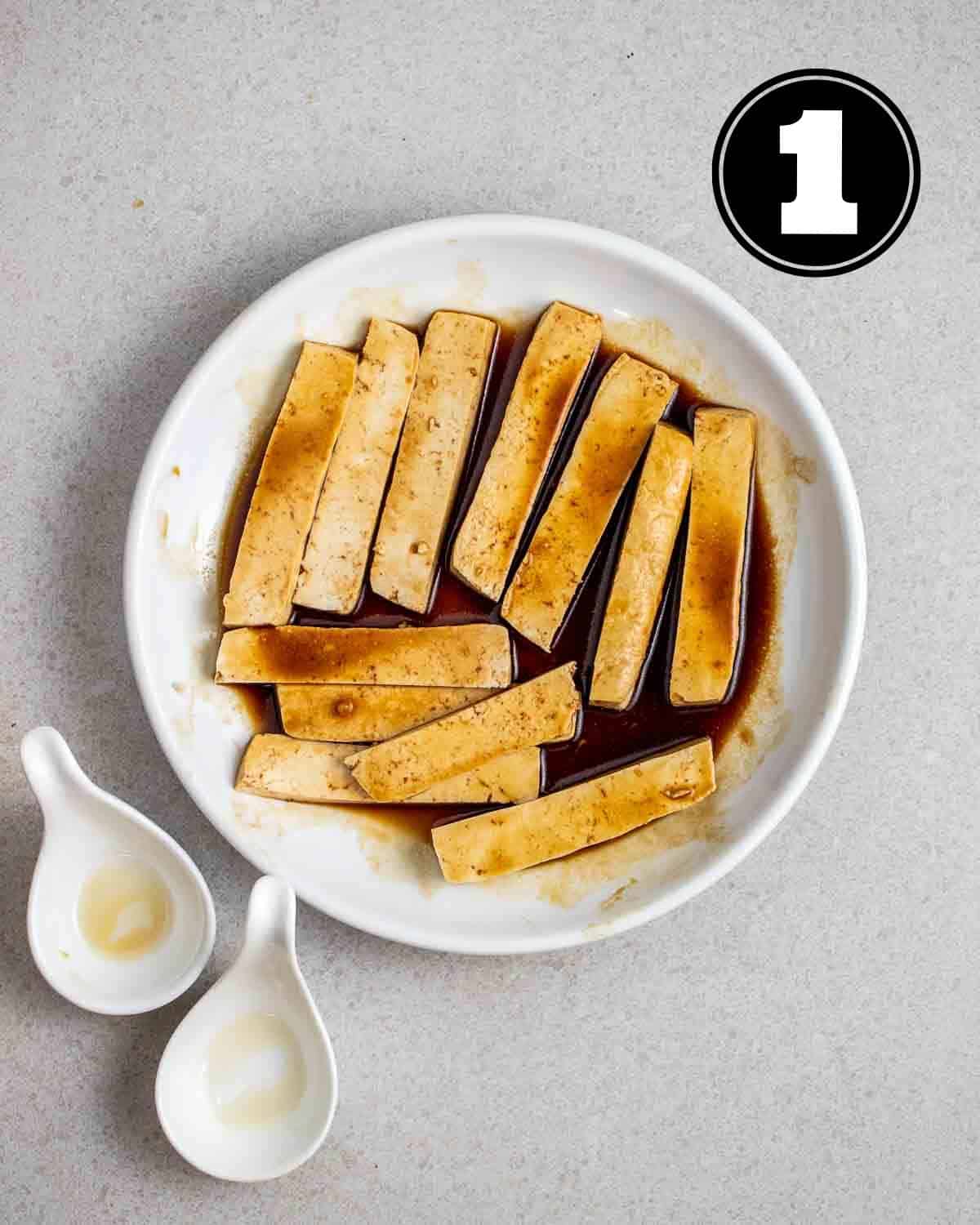
Start by marinating tofu for 30 minutes to an hour.
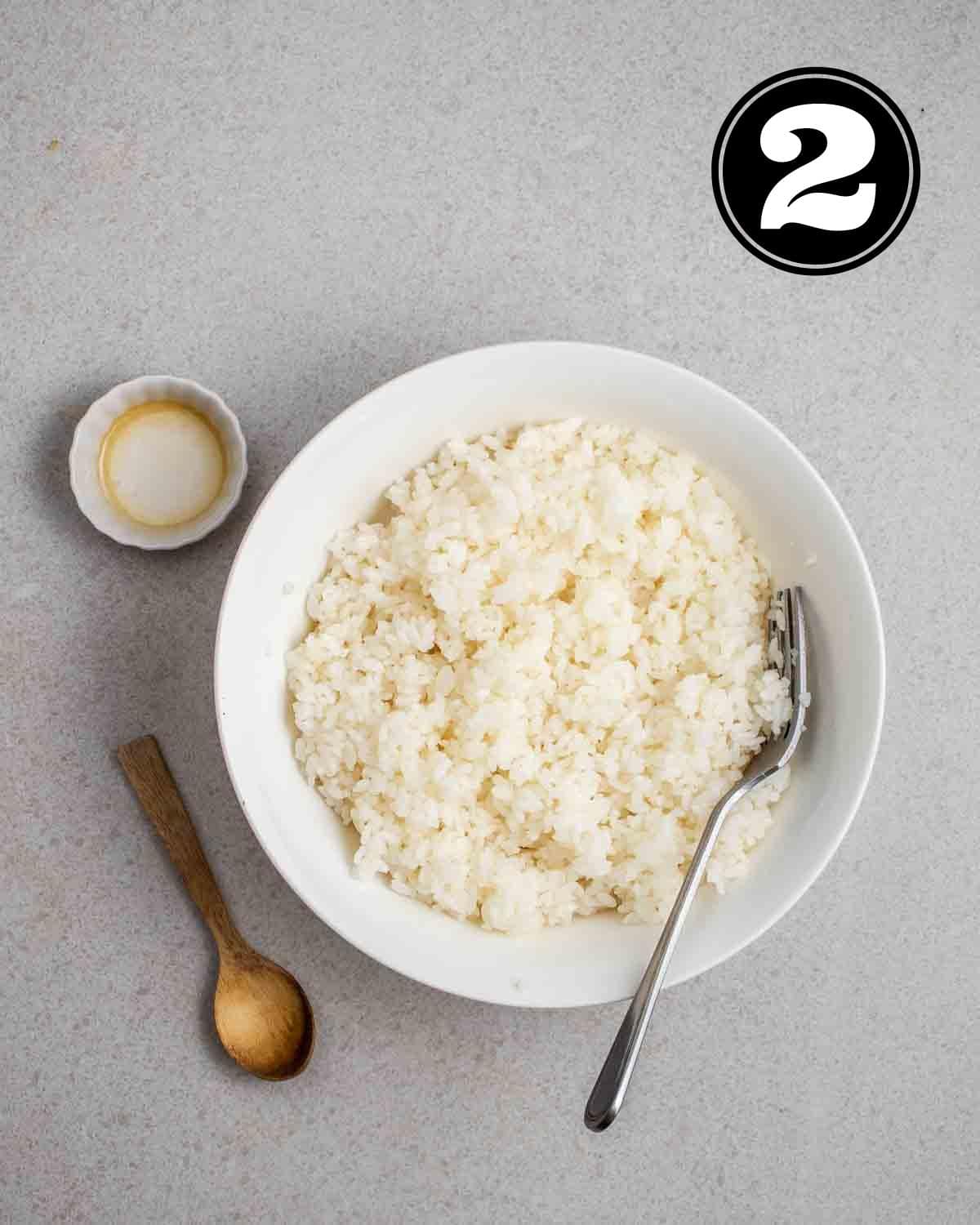
In the meantime, mix salt and sesame oil into the rice while the rice is still warm. Set aside.
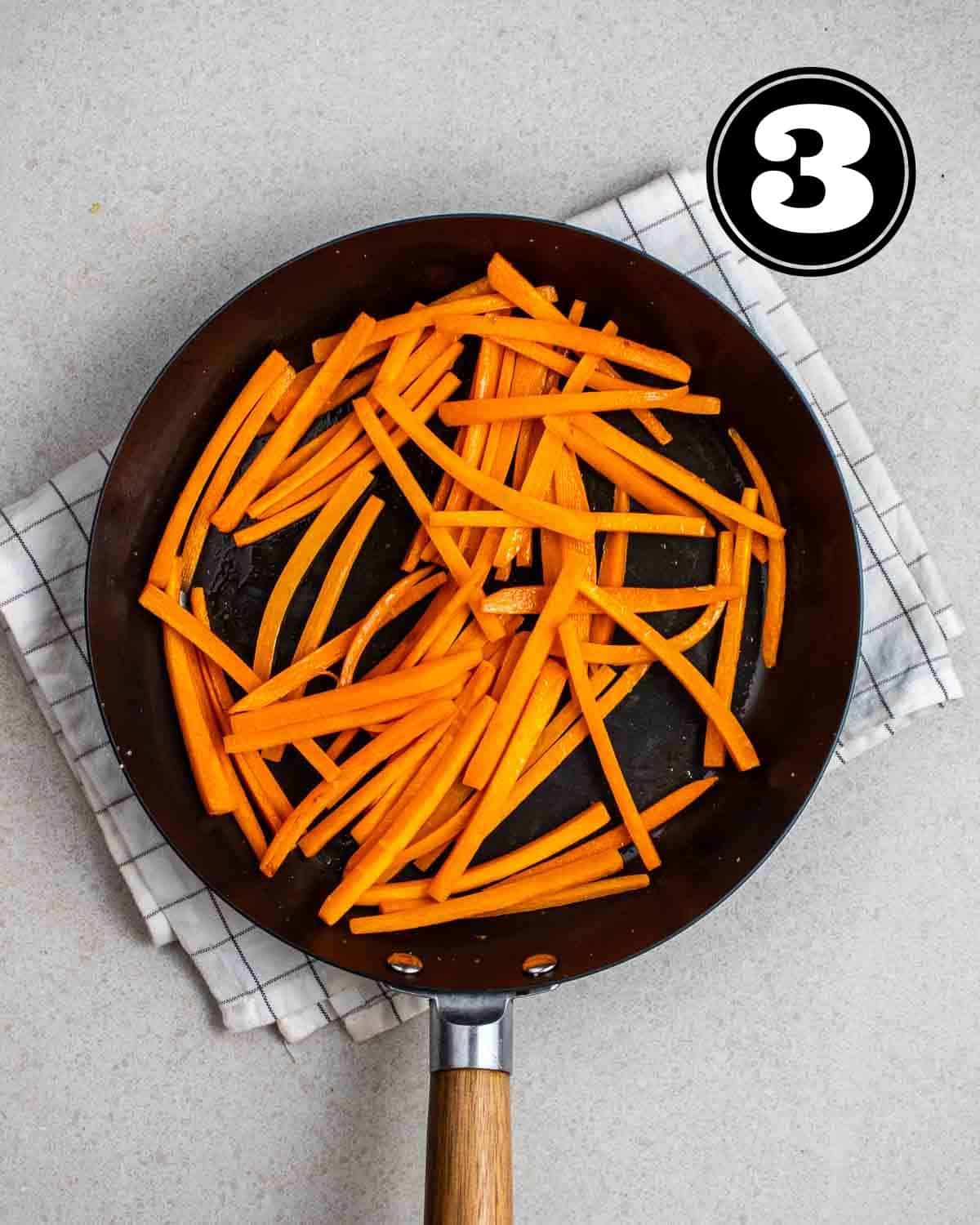
Heat some oil in a pan. Saute carrot for 4-5 minutes or until it has softened slightly.
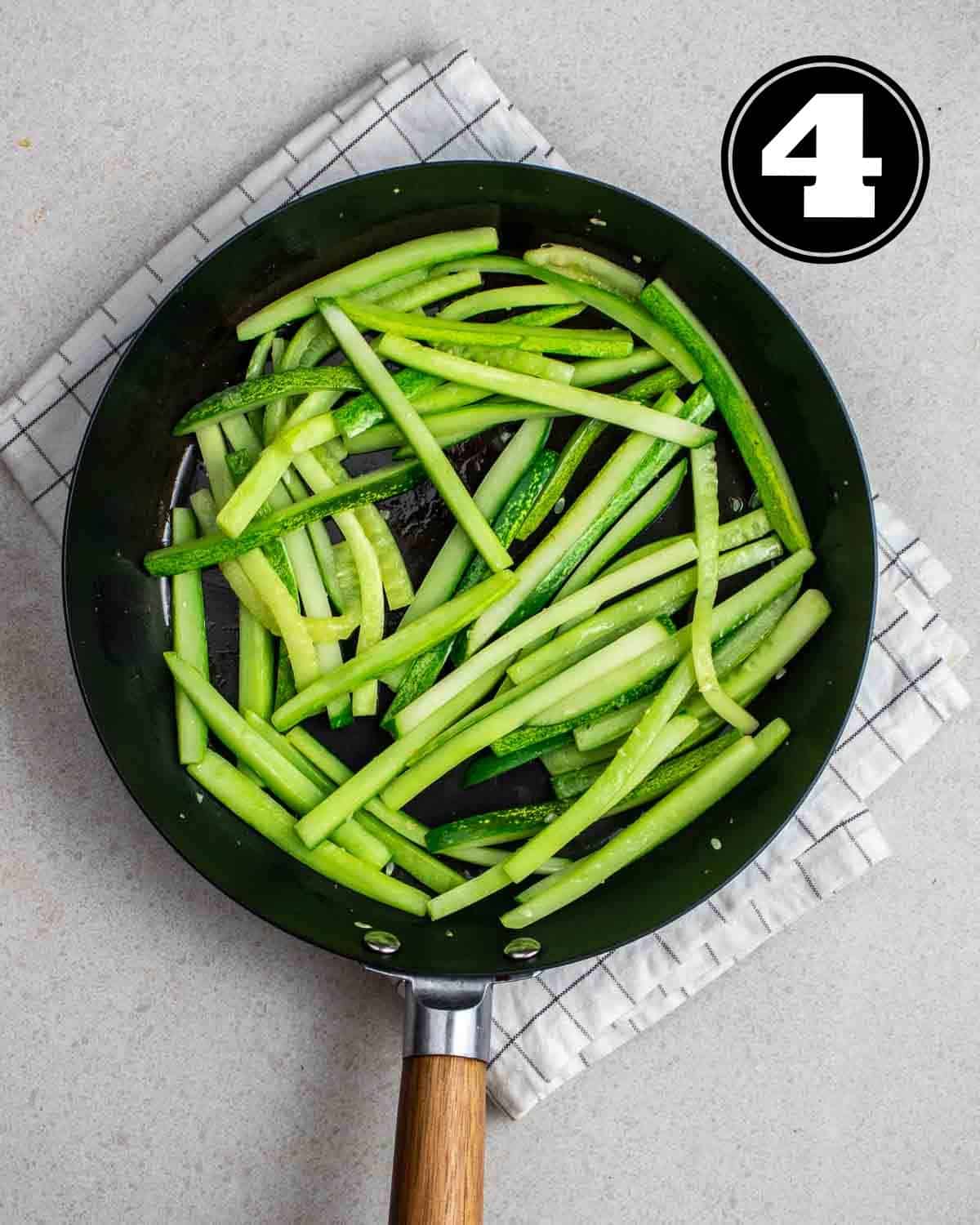
Saute cucumber next for another 4-5 minutes.
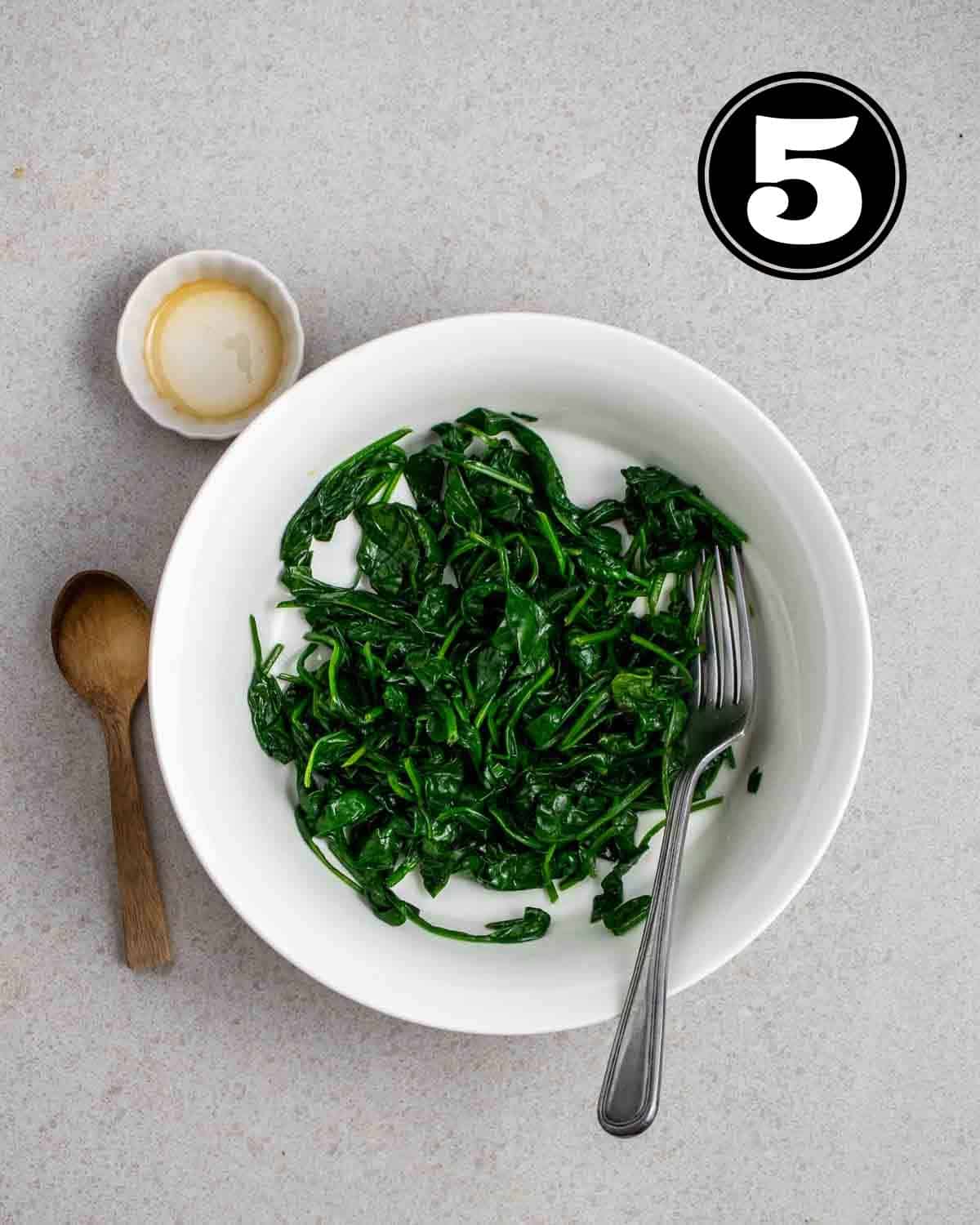
Blanch spinach, then immerse it in cold water. Squeeze out excess water and mix it with the sesame oil and salt.
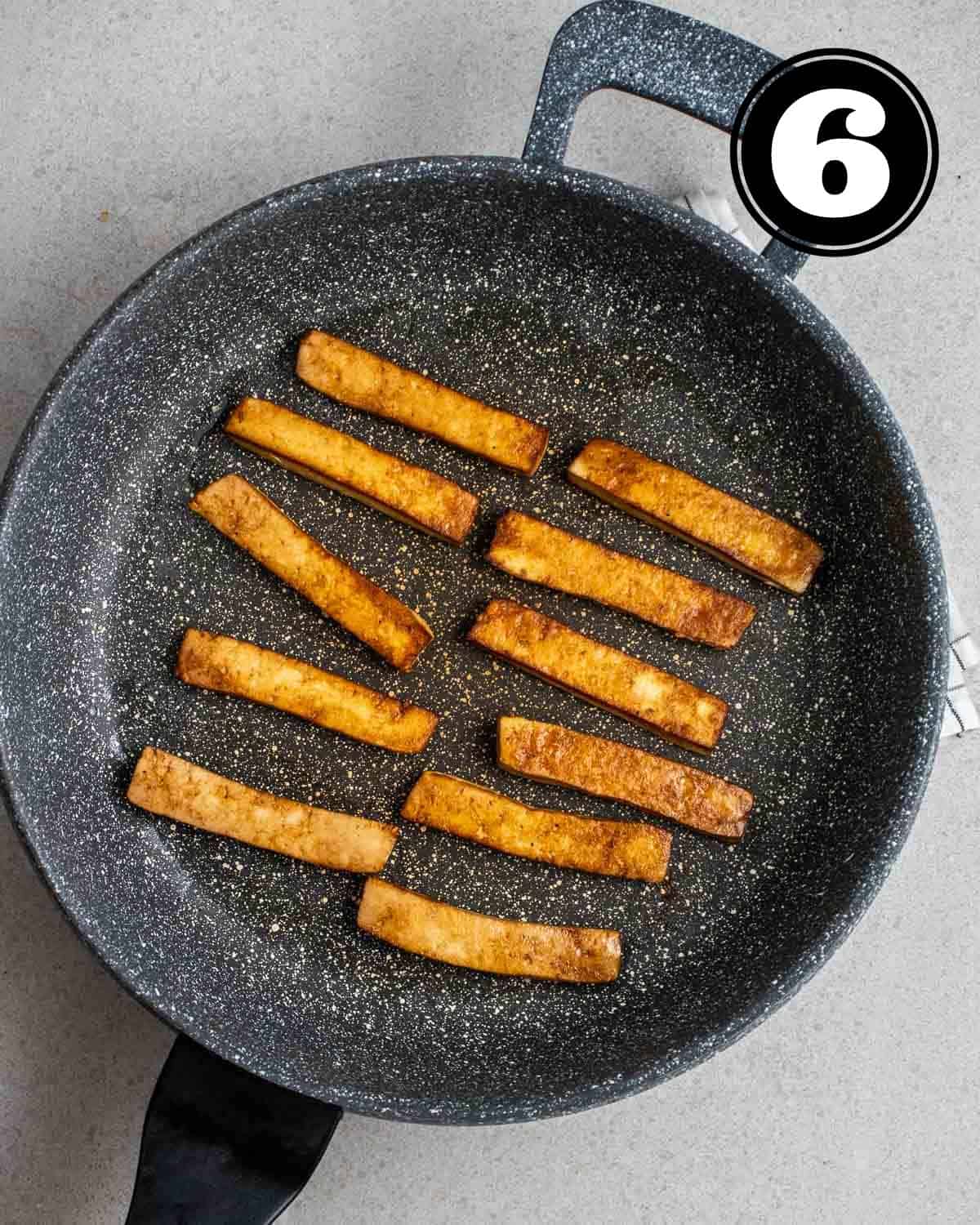
Lastly, pan-fry tofu on both sides for 2-3 minutes until golden brown.
Assemble the rolls
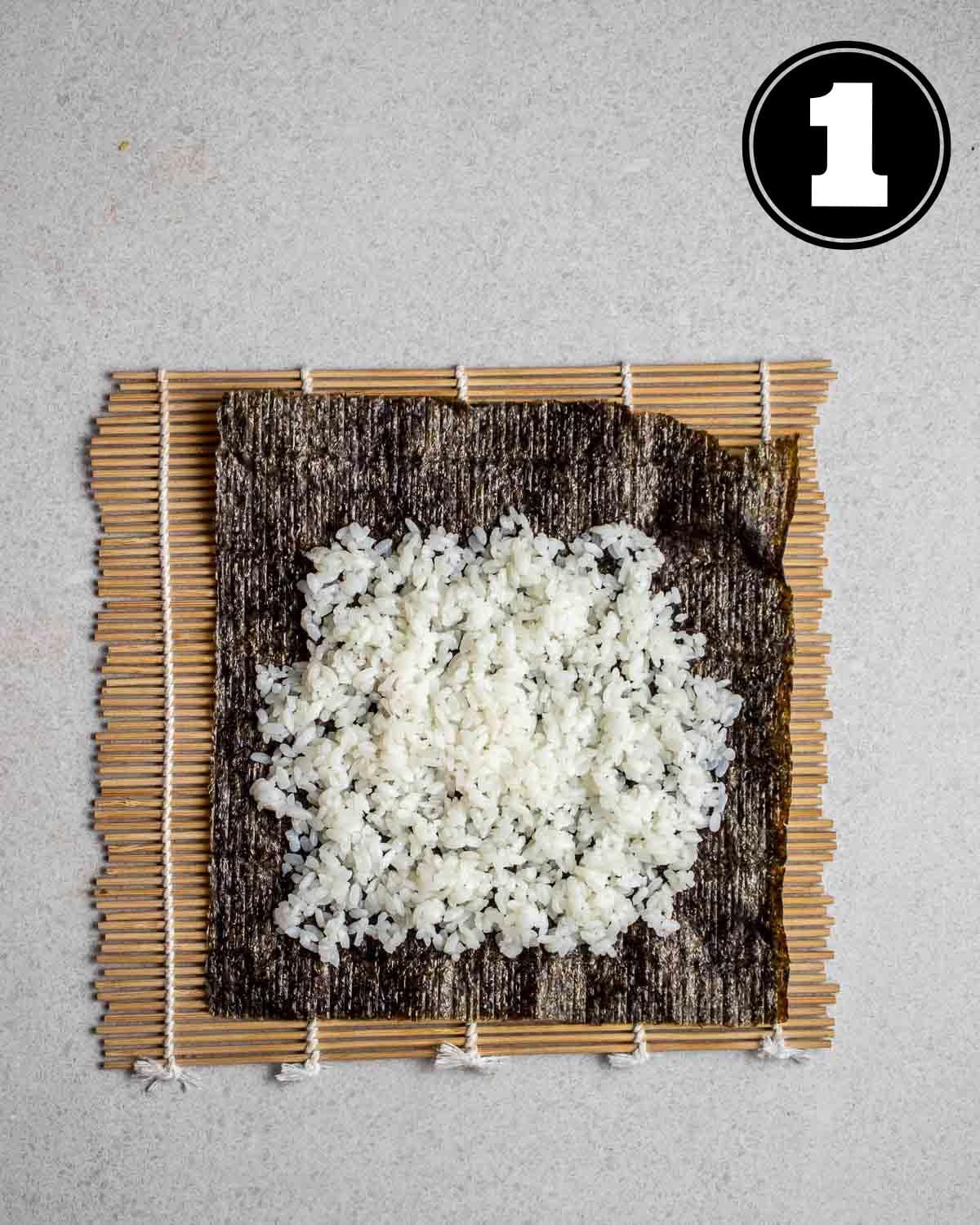
Place a sheet of nori on the bamboo mat. (shiny side facing down) Spread ¾ cup of rice onto the seaweed, leaving an inch at the far end.

Layer up carrot, cucumber, spinach, and pickled radish on half of the seaweed sheet.
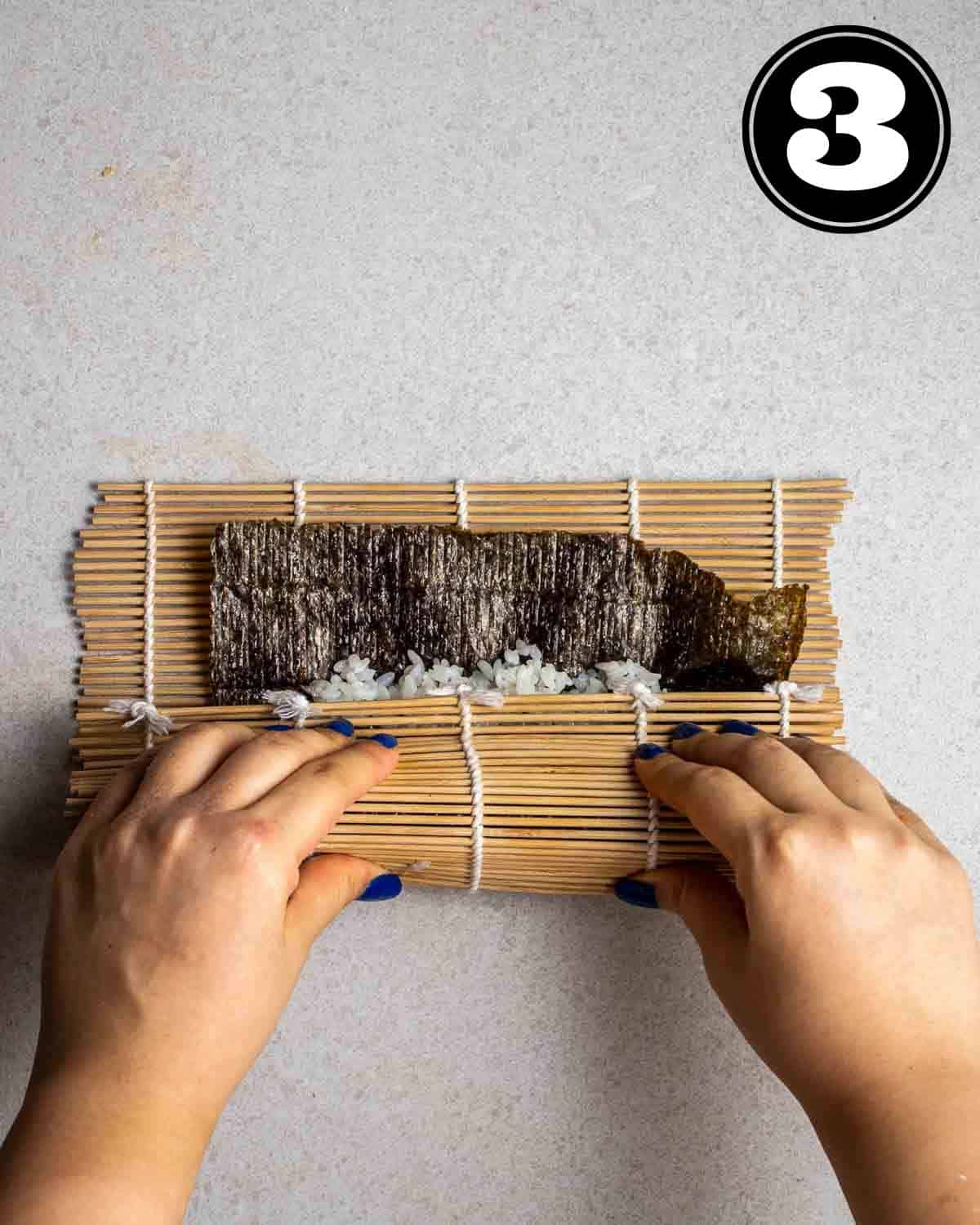
Roll the bottom edge over the filling while simultaneously tucking the fillings in to keep them in place.
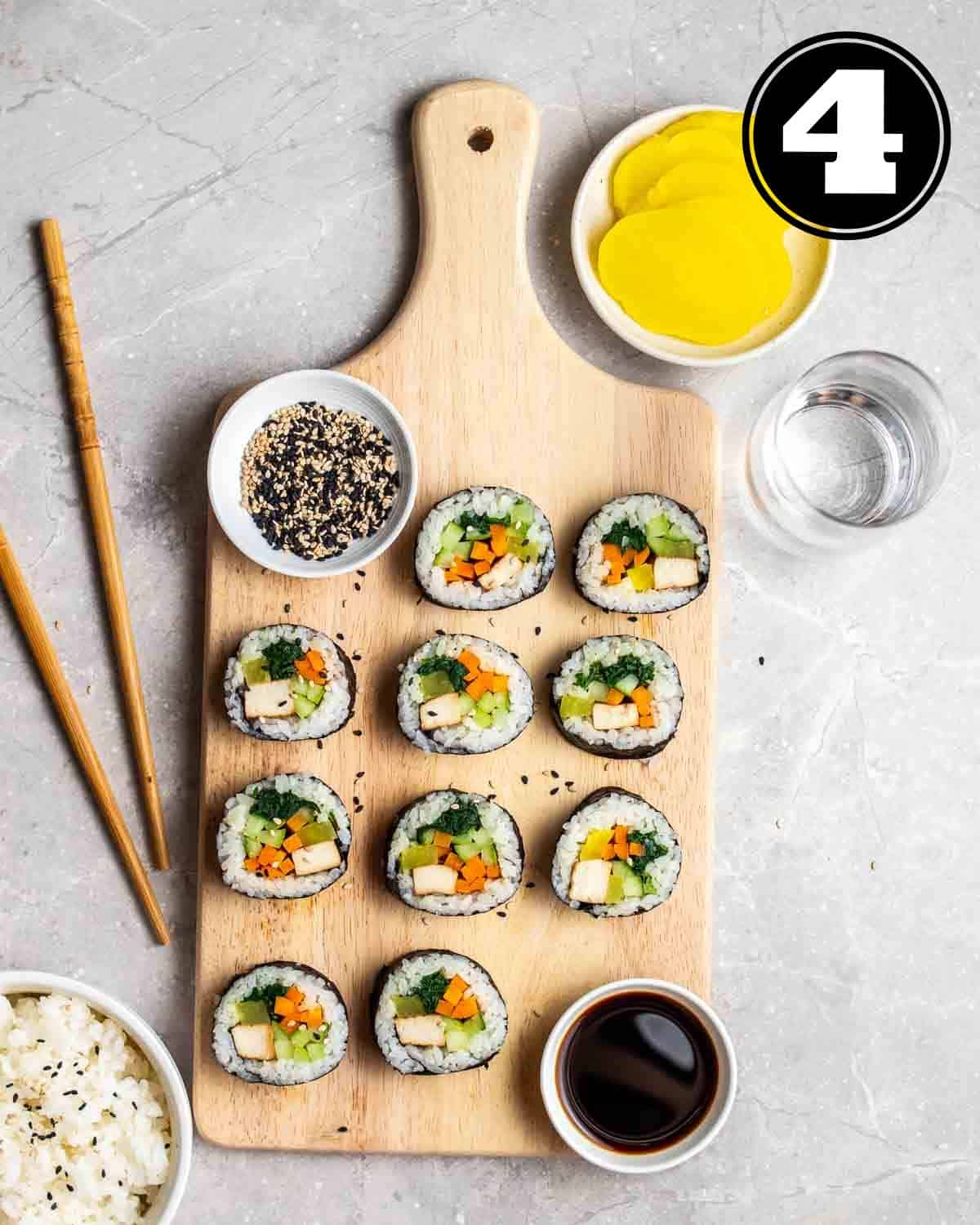
Roll it up tightly while gently applying pressure until the kimbap is sealed. Then, brush on some sesame oil. Slice and serve your vegan kimbap!
✔Helpful tips
- Season rice while warm - Heat it slightly using the microwave before mixing in seasonings if your rice has cooled completely.
- Making it without a bamboo mat - If you do not have a sushi mat, simply roll your kimbap tightly while gently applying pressure with your hands to ensure that everything is tucked in nicely.
- Wet your fingers - Especially when handling rice as it tends to be quite sticky. I like keeping a small bowl of water beside me while rolling my gimbap.
- Do not overstuff kimbap - If you find that you are having a hard time wrapping them, you might have added too much filling. Remove some fillings and try rolling again.
- Slice kimbap with a sharp knife - This is to produce cleanly cut kimbap.
- Kimbap is best enjoyed in 24 hours - Rice might turn stale if left out for too long, especially if the kimbap is sliced.
Save this recipe!
Also get a FREE high-protein vegan recipe eBook + weekly new recipes! Unsubscribe anytime.
🥒Other filling ideas
Here are some other filling ideas for your vegetable kimbap. Feel free to swap or add in any ingredient below that sounds good to you!
- Vegan omelette
- Vegan ham - like my seitan bologna
- Veggies - zucchini, bell peppers
- Kimchi
- Braised burdock root
- Tofu bulgogi
- Dippings - soy sauce, gochujang sauce

❄️Storing suggestions
Fridge - Vegan kimbap can be refrigerated for 1-2 days. DO NOT slice the rice rolls. Instead, wrap them with saran wraps and store them in airtight containers to prevent them from drying out.
Reheating - The best way to reheat kimbap is to dip sliced kimbap in some egg replacement (like JustEgg) on both sides and pan-fry them. Or, you can heat them in the microwave at 10-second bursts, until they are slightly warm.
Prep fillings ahead - A better way to meal prep kimbap is to make the filling ahead of time and store them in separate containers. Fillings can be refrigerated for 3-4 days. When ready to enjoy, heat the rice in the microwave and assemble the rice rolls!
🍲How to serve
Kimbap is commonly served as a snack or side dish.
For an authentic Korean meal, I recommend pairing kimbap with below dishes:
❔Commonly asked questions
Kimbap is usually enjoyed at room temperature, but you can also heat them slightly if you prefer them to be warm. It is not recommended to eat kimbap cold as rice turns hard upon refrigerating.
Short-grain rice (commonly called sushi rice) is recommended to make kimbap. As it has a sticky texture, it helps the rice rolls to hold their shape.
You can use leftover short-grain rice to make kimbap. Heat it in the microwave to soften it before adding the seasonings.
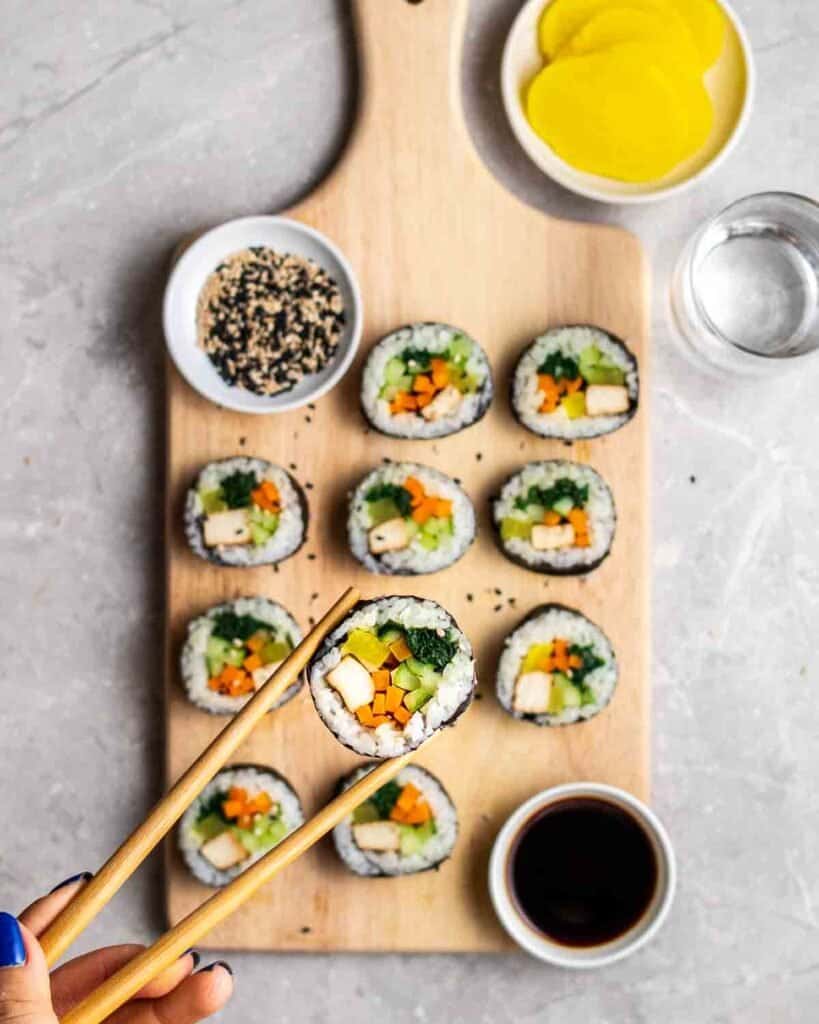
📖 Recipe

Vegan Kimbap
Equipment
- non-stick pan or well seasoned cast-iron pan
- saucepan or pot
Ingredients
Tofu
- 1 14oz block extra firm tofu drained, pressed, and sliced*
- 2 tablespoons soy sauce or tamari/shoyu (use gluten-free if needed)
- 2 teaspoons maple syrup
- 2 teaspoons sesame oil
- 1 teaspoon garlic powder
Rice
- 2 ½ cups short-grain rice white or brown, freshly cooked**
- 2 teaspoons sesame oil
- ¼ teaspoon salt or to taste
Vegetables
- 1 carrot julienned
- 1 English cucumber julienned
- 4 strips pickled radish danmuji
- 3.5 oz baby spinach
- 3 teaspoons sesame oil divided
- salt to taste
Rest of the ingredients
- 4 strips pickled radish danmuji
- 4 sheets nori
- sesame oil for brushing
Instructions
Prepping filling
- Combine all seasonings needed for tofu.2 tablespoons soy sauce, 2 teaspoons maple syrup, 2 teaspoons sesame oil, 1 teaspoon garlic powder
- Place sliced tofu in a large plate, and pour in the marinade. Toss until tofu slices are well coated. Let them marinate for 30 minutes to an hour.1 14oz block extra firm tofu
- In the meantime, mix salt and sesame oil into the rice while rice is still warm. Set aside.2 teaspoons sesame oil, 2 ½ cups short-grain rice, ¼ teaspoon salt
- Heat 2 teaspoons of neutral tasting oil in a pan. Saute carrot for 4-5 minutes, or until it has softened slightly. Add in sesame oil and salt to taste.
- Repeat the same for the cucumber.
- Bring a pot of water to a boil, and prepare a bowl of cold water. Blanch your spinach, then place it immediately into the cold water. Drain well and gently squeeze out excess water.
- Mix in sesame oil and salt into the cooked spinach. Stir to mix, then set aside for later use.
- Heat up 2 teaspoons of oil in a non-stick pan over medium high heat. Place tofu in one layer, and cook them for 5-6 minutes, flipping them halfway through.
Assembly the rolls
- Place a sheet of nori on the bamboo mat. (shiny side facing down)
- Spread out ¾ cup of rice onto the seaweed, leaving an inch gap at the far end.
- Layer up carrot, cucumber, spinach, tofu, and pickled radish, covering ½ of the nori sheet.
- Roll the bottom edge over the filling while simultaneously tucking filling in to keep them in place.
- Continue to roll it up tightly while gently applying pressure until kimbap is sealed. If you have trouble sealing it, damp the uncovered end of seaweed with your fingers.
- Brush on some sesame oil into your rice rolls. Using a sharp knife, slice them into bite-sized pieces before serving.
Notes
- Season rice while warm - Heat it slightly using the microwave before mixing in seasonings if your rice has cooled completely.
- Making it without a bamboo mat - If you do not have a sushi mat, simply roll your kimbap tightly while gently applying pressure with your hands to ensure that everything is tucked in nicely.
- Wet your fingers - Especially when handling rice as it tends to be quite sticky. I like keeping a small bowl of water beside me while rolling my gimbap.
- Do not overstuff kimbap - If you find that you are having a hard time wrapping them, you might have added too much filling. Remove some fillings and try rolling again.
- Kimbap is best enjoyed in 24 hours - Rice might turn stale if left out for too long, especially if the kimbap is sliced.
Save this recipe!
Also get a FREE high-protein vegan recipe eBook + weekly new recipes! Unsubscribe anytime.
Nutrition
Nutrition info calculated is just a rough estimate and is provided as a courtesy. Bear in mind that value will vary based on variables like specific brand or type of product used. To obtain the most accurate representation, it is highly recommended that you calculate it on your own with the actual amount and type of ingredient used.









CAROL McCollum says
Sounds yummy!! So, am I correct that this makes 4 rolls, and a serving is one roll? Sodium per serving (one roll??) is 889mg. That's more than twice my meal allotment! If I omit the salt & use low sodium soy sauce or tamari, will this still be wonderful?
Meesha says
Yes, it will still taste really good. 😁
Valerie says
Just checking that the tofu gets rolled into the kimbap rolls along with the veggies. (I didn't see it in the instructions, so I thought I should ask!)
Meesha says
Oh sorry! Thanks for pointing that out, I am going to change it now.😅